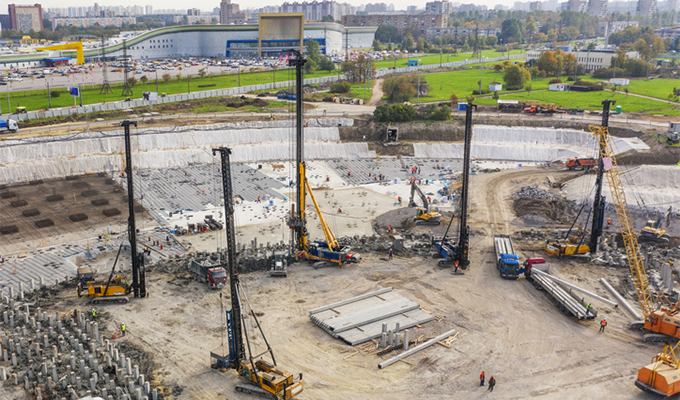Whether contractors are building a multi-story apartment building or a sprawling shopping center, the role of geotechnical engineer professionals inevitably affects their work. These experts study the individual and combined elements of materials in the ground. The importance of geotechnical engineering is significant, particularly because people in this field give recommendations to prevent landslides, collapsed buildings, earthquake damage, and other undesirable outcomes. Here’s a closer look at geotechnical engineers’ work and why it matters.
Preventing Future Mistakes
Succeeding as a geotechnical engineer often requires studying why previous failures occurred and what preventive measures people should take. Contractors can use that information to significantly reduce the chances of new tragedies.
Some recent research centers on tailings dams. They’re embankment dams that store mining byproducts. Complications can arise because the dams may contain radioactive waste, along with ground rock and metals. One study found that a quarter of international tailings dams fail due to earthquakes.
Previous research from this team indicated people incorrectly cone penetration testing (CPT) results. CPT is a geotechnical engineering practice that uses a constant penetration rate to push cone-tipped rods into embankments and tailings. Continuous measurements of the tip’s resistance assess stability. One incorrect but commonly made assumption was that the tailings are fully saturated, natural soils. However, the cores are often a mix of air and water instead.
This recent study disproved the belief that earthquakes do not liquefy unsaturated tailings. Thus, geotechnical engineers can use that finding to better determine which tailings dams are most likely to fail during earthquakes.
Elsewhere, another study investigated what caused the 2022 failure of a tailings dam for diamond mine waste in Jagersfontein, South Africa. Researchers used satellite images to identify several deviations from best practices. They concluded that water permeated the dam’s rocky structures, eventually causing external erosion. Those events caused the ultimate instability that destroyed multiple homes and resulted in a death.
These examples highlight the importance of geotechnical engineering for keeping people safe and preventing costly failures. The more contractors know about what went wrong and why, the more proactive they’ll become.
Supporting Climate Change Preparedness
Many people are familiar with how new buildings often feature eco-friendly materials and smart systems that use fewer resources. These are common additions that can help the structure remain resilient against climate change. However, recent evidence suggests the role of geotechnical engineer data will also facilitate such preparedness.
For example, high-altitude buildings in the Italian Alps are starting to crumble. In-depth investigations confirmed that thawing permafrost caused them to sink and created other complications, including the increased likelihood of rock falls and landslides.
In another case, a Northwestern University study showed that changing underground temperatures have made urban buildings less stable. The work involved installing more than 150 sensors in Chicago and monitoring the associated data. One finding was that underground temperatures were often 10 degrees warmer near buildings and transportation networks than near greenspaces.
Simulations associated with the research also revealed that warmer underground temperatures can make the soil expand and push up by up to 12 millimeters. Conversely, warm ground can also cause sinking of up to 8 millimeters, threatening the buildings placed upon it.
The simulation data can help contractors and other involved parties decide how to keep the building stable for the future. A technique called slurry grouting enhances the soil’s load-bearing capacity and is environmentally friendly. It’s not the only option but worth a look when it’s time to weigh the possibilities.
Including the Role of Geotechnical Engineer Insight in Renewables
Commercial clients often become interested in solar panels due to their sustainability and energy-saving potential, among other things. However, they may overlook the input geotechnical engineers give to these projects. They participate in soil characterization, corrosivity assessments and geological hazard identification, then use their findings to influence the design of solar panel sites.
Some projects require hundreds of thousands of individual foundations to keep the panels stable. However, a geotechnical engineer can provide recommendations that allow designers to speed up installation and reduce materials.
Geotechnical engineering professionals also have challenging jobs when evaluating the proposed sites of offshore wind farms. They must recommend the appropriate anchors for the turbines. Some won’t work if the seabed is dense sand versus hard rock.
The importance of geotechnical engineering becomes clear for project managers and clients who want to get the most out of their renewable energy investments. Without those specialized recommendations, preventable problems could appear that make it more difficult to see the return on investment for renewable energy efforts.
There’s been a recent trend of siting solar farms in unusual locations, such as the desert and parking lots. The ability to take advantage of unused spaces is a big reason offshore wind farms have become more popular, too. As people continue to push the boundaries of what’s been done before when they select locations for renewable projects, geotechnical engineers will keep playing a vital role.
Geotechnical Engineering Expertise Is Essential
Many contractors may not think about the ground beneath them as they work on various projects. But geotechnical engineers know such assessments are necessary for ensuring structures remain stable, functional and safe.
Their knowledge is also important for determining why previous projects failed. Looking back to examine what went wrong allows contractors to learn from other’s mistakes and make their projects free from the same errors.
As commercial buildings keep getting constructed with the future in mind — including aspects of climate change resilience — geotechnical engineers have the advice needed to make those projects successful in the short and long term.
About the Author
Emily Newton is an industrial writer who specializes in covering how technology is disrupting industrial sectors. She’s also the editor-in-chief of Revolutionized where she covers innovations in industry, construction, and more.


